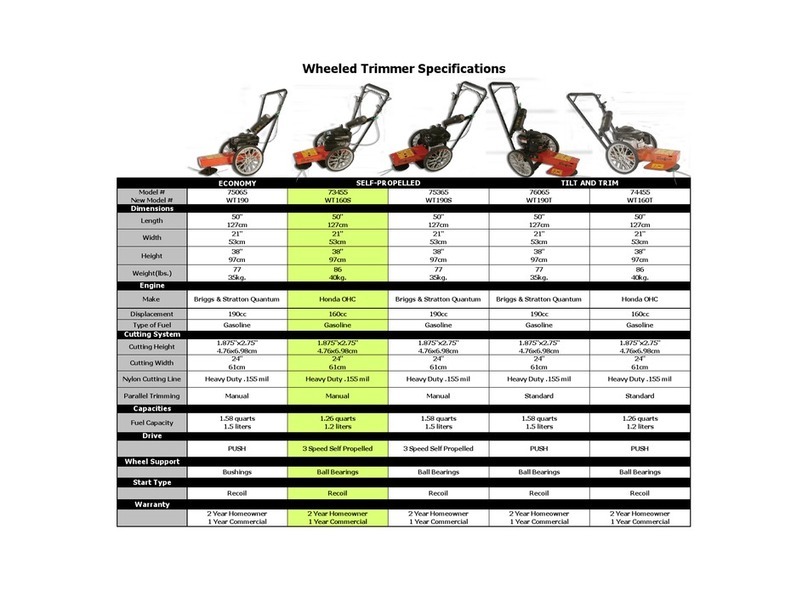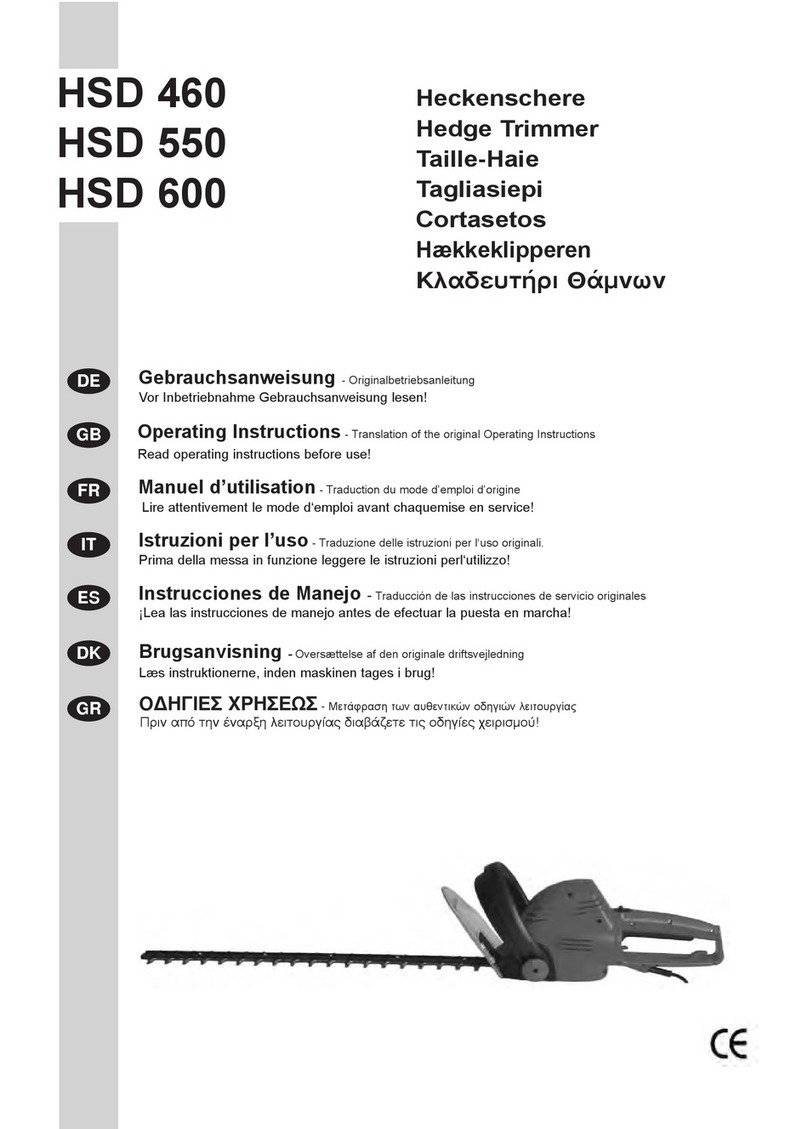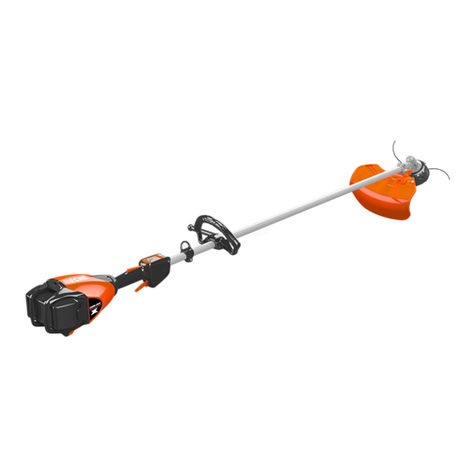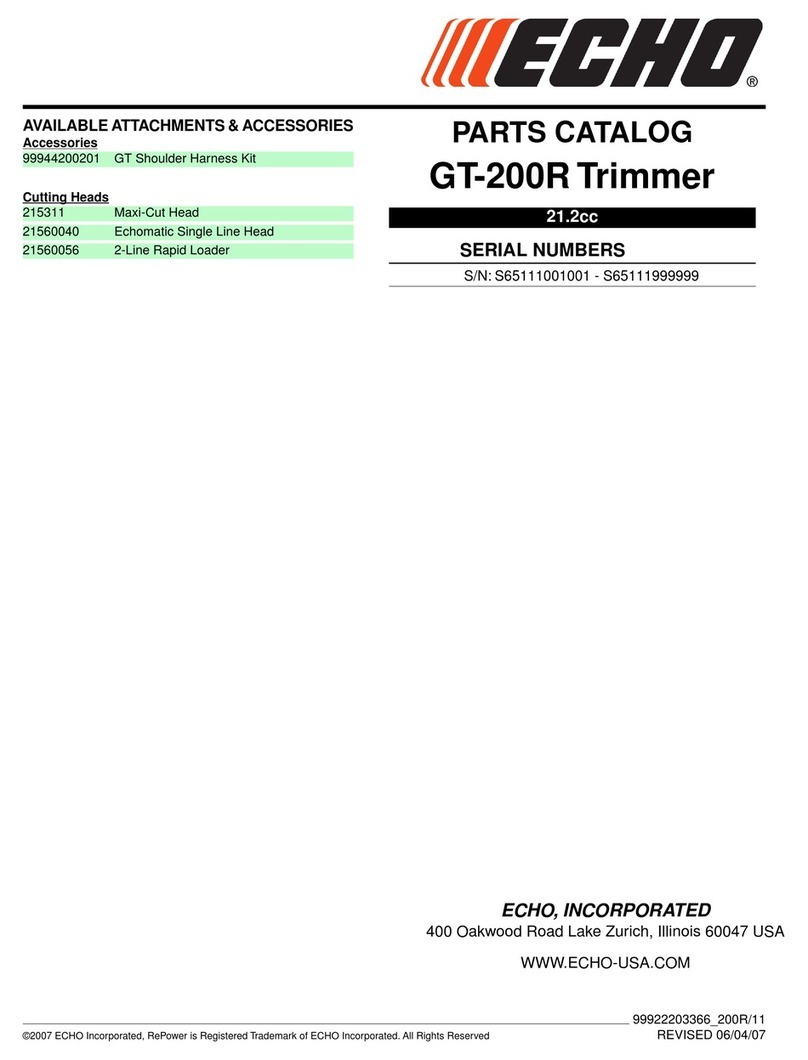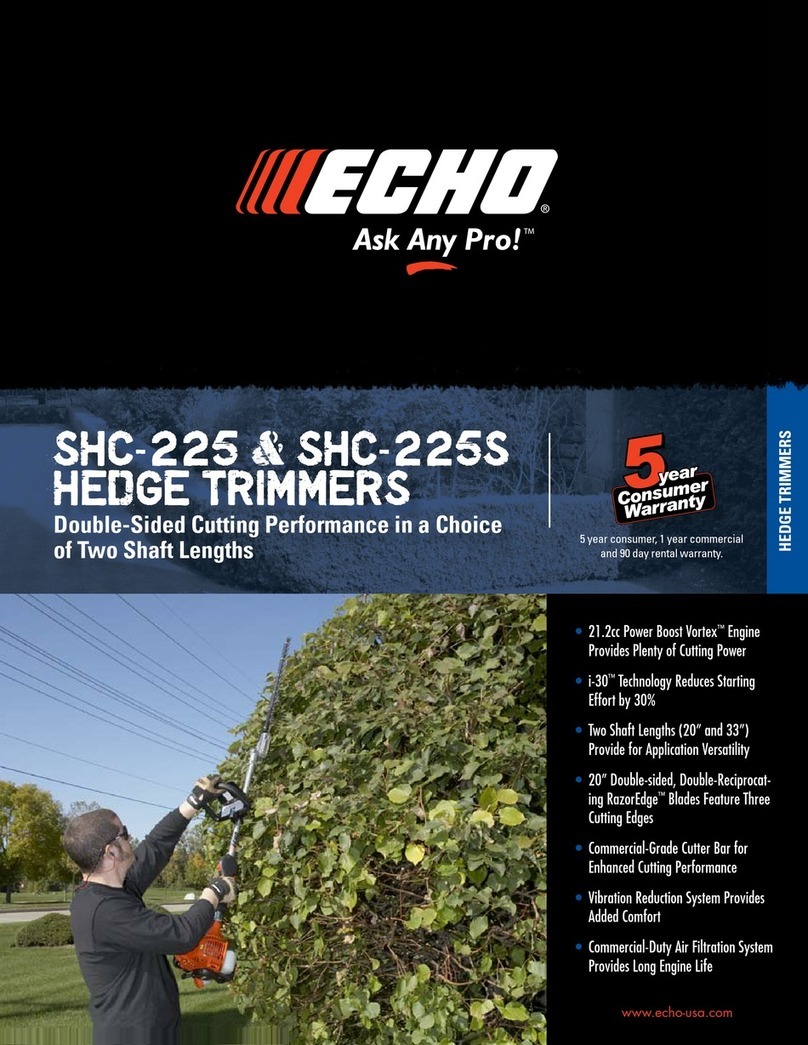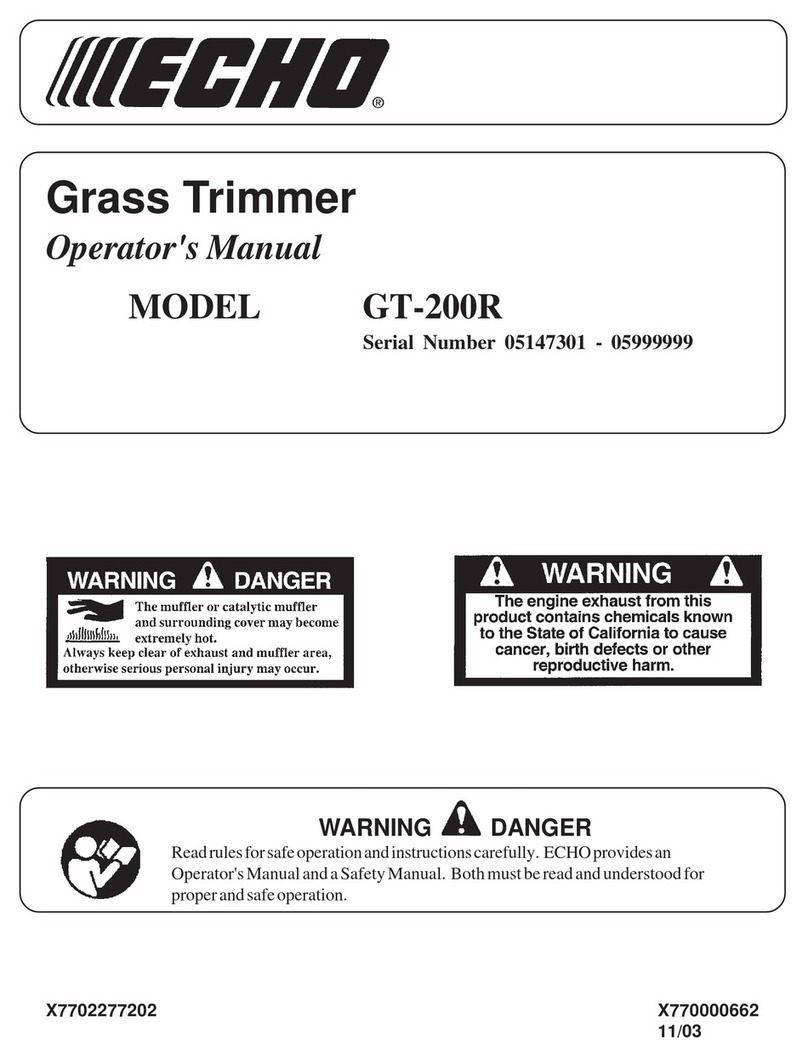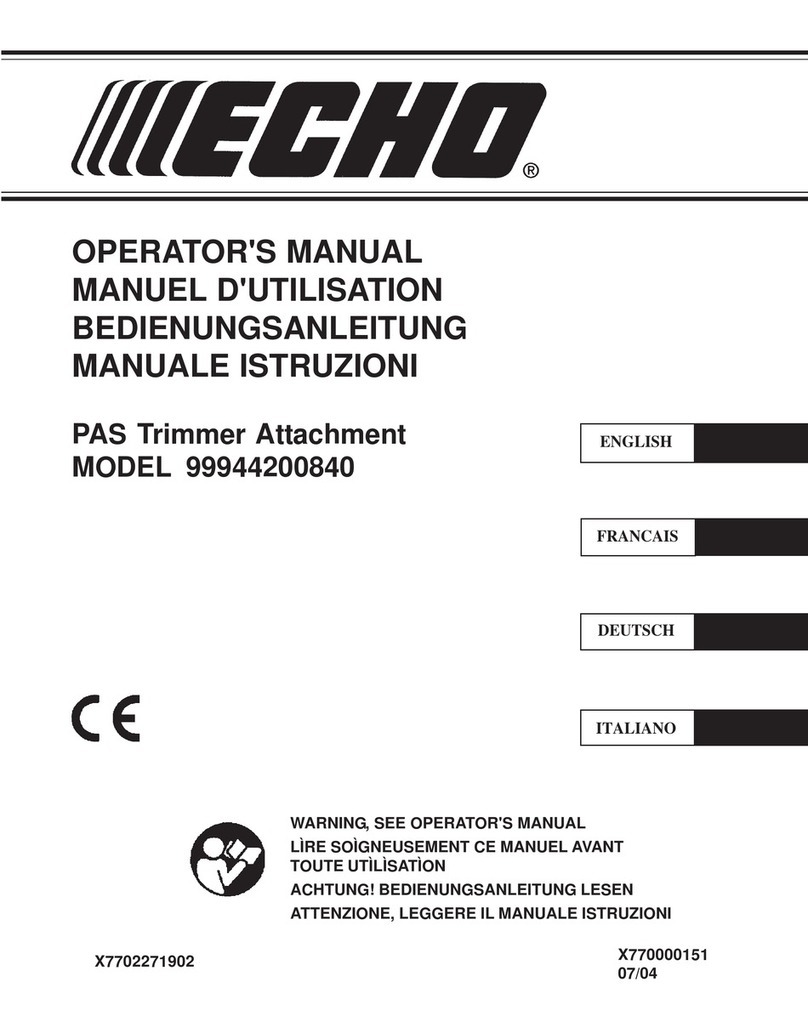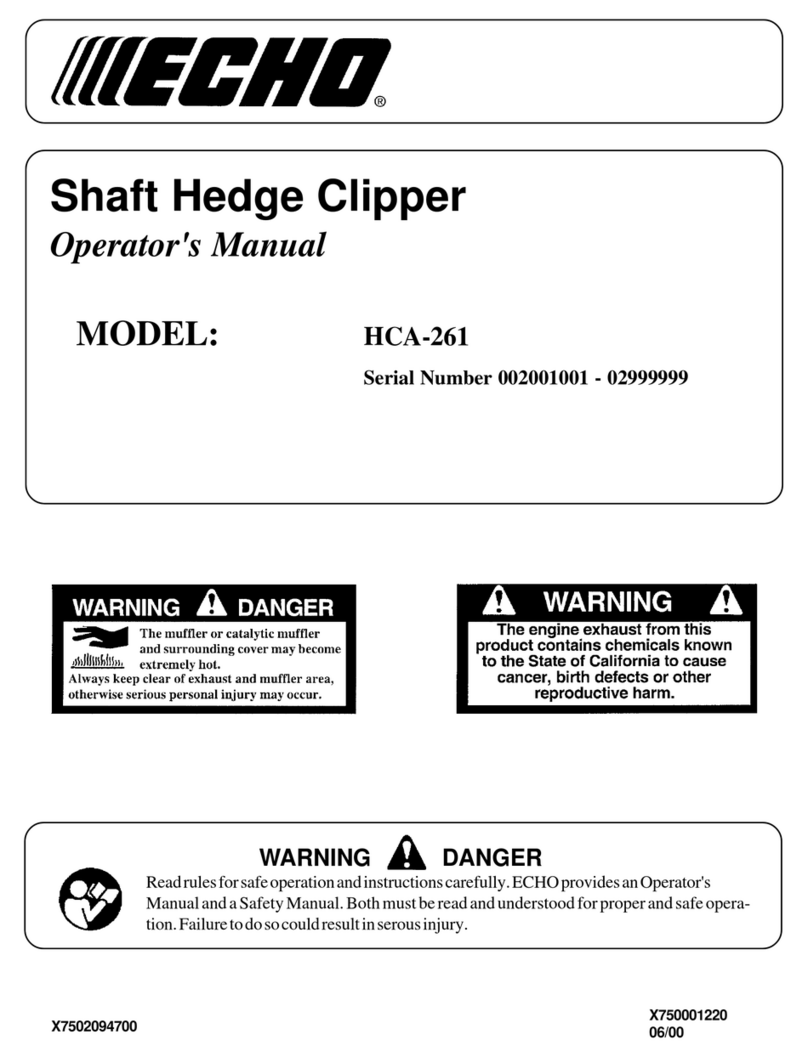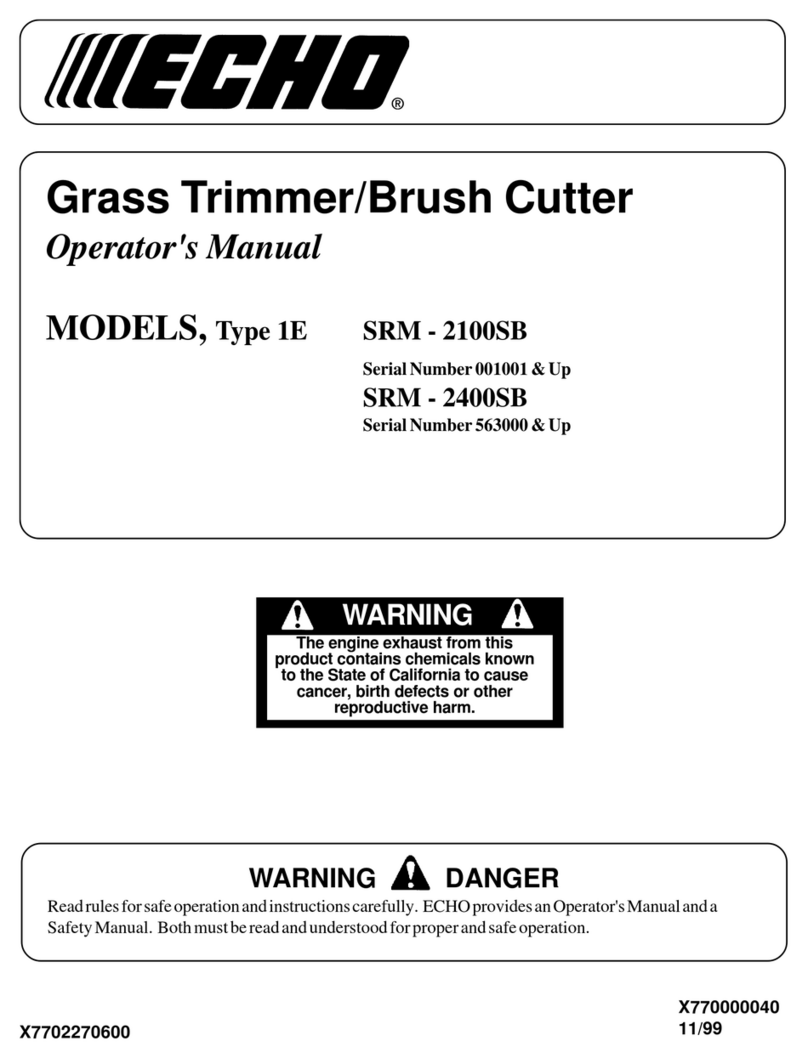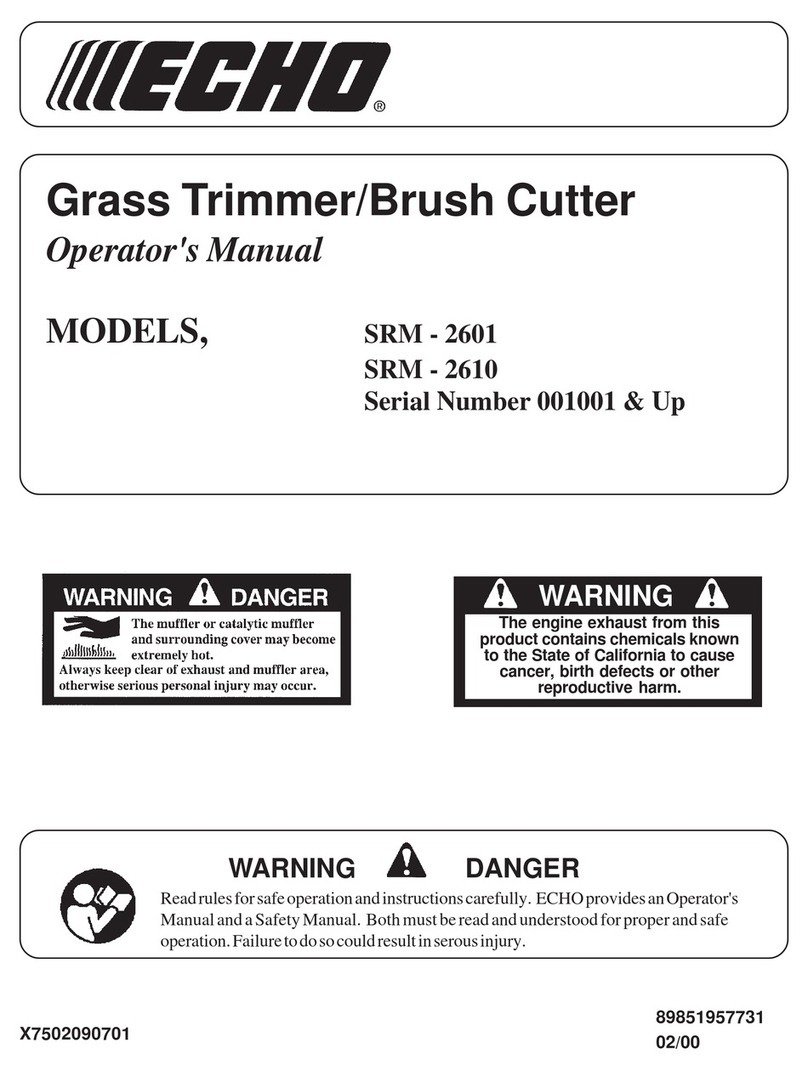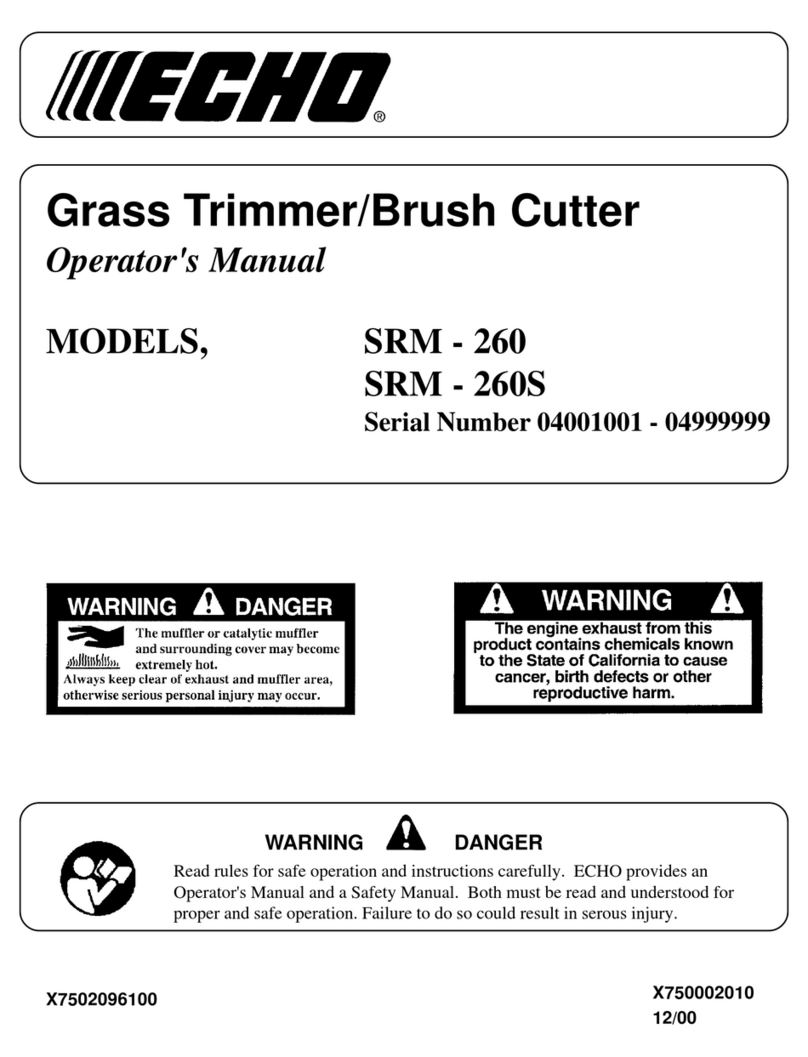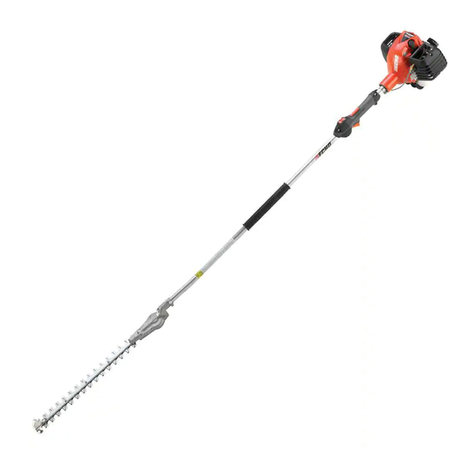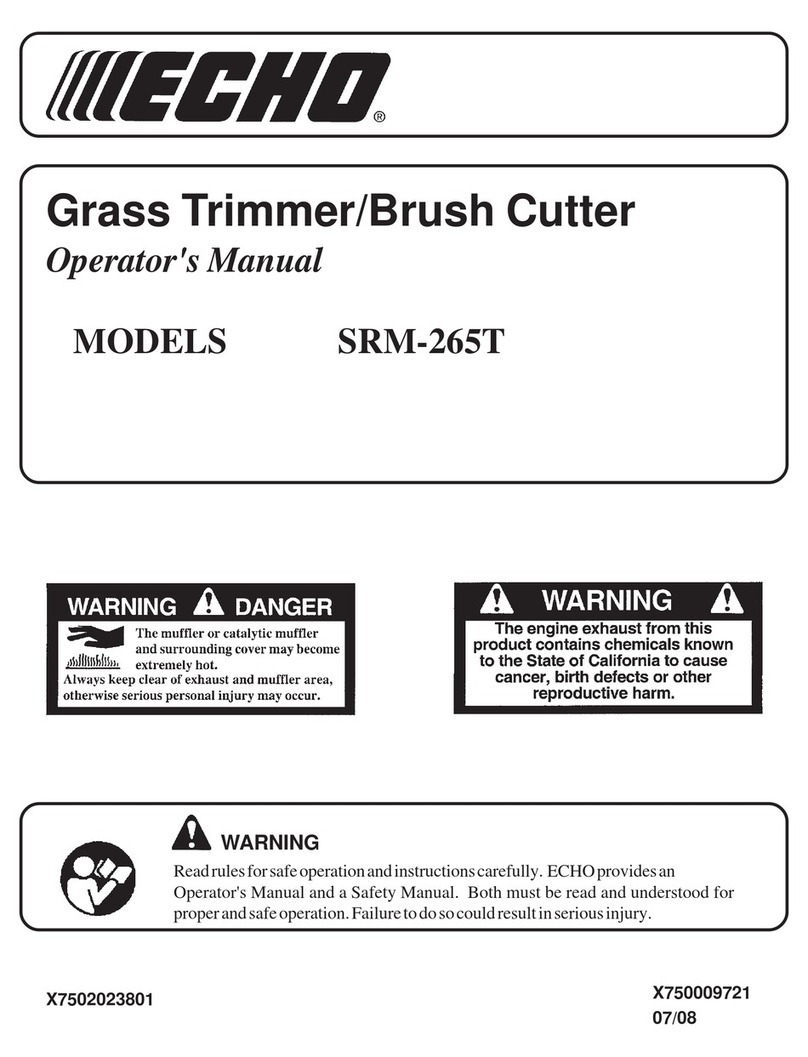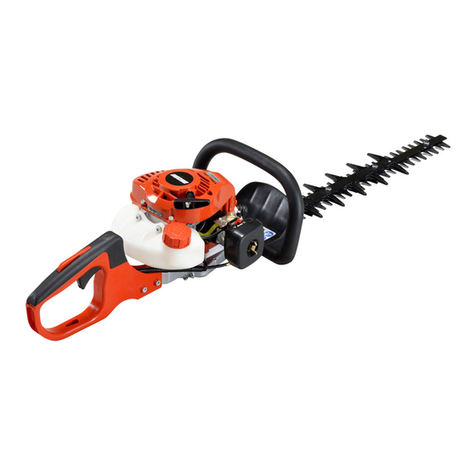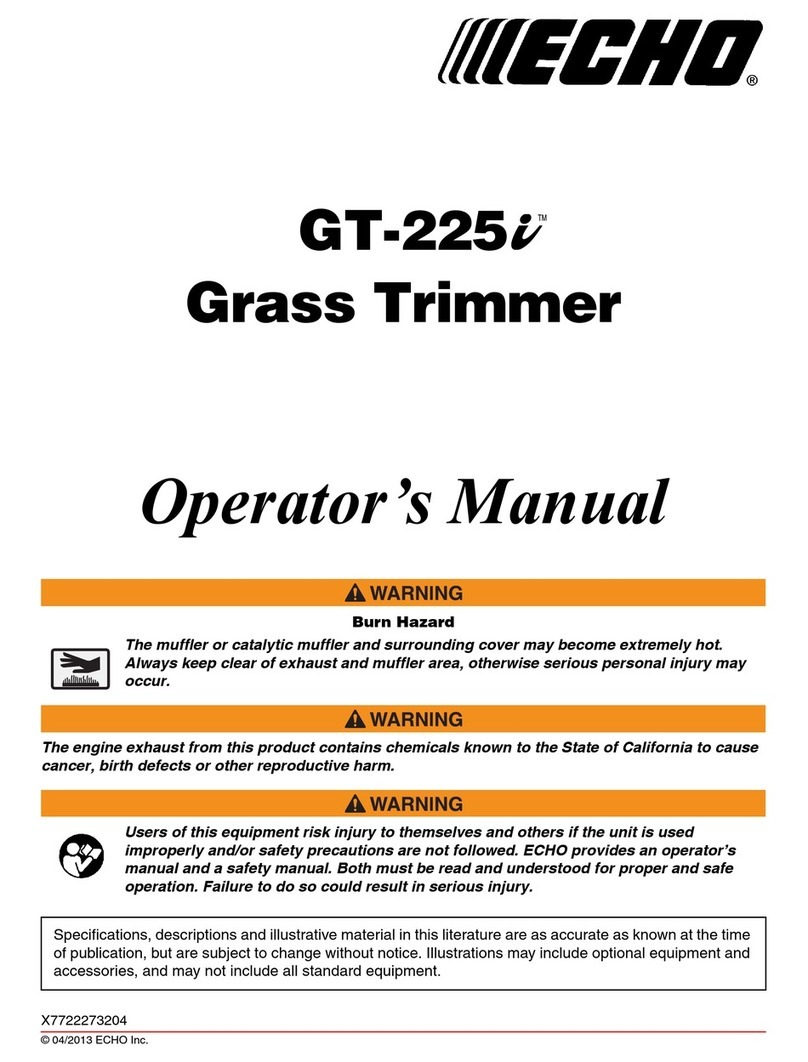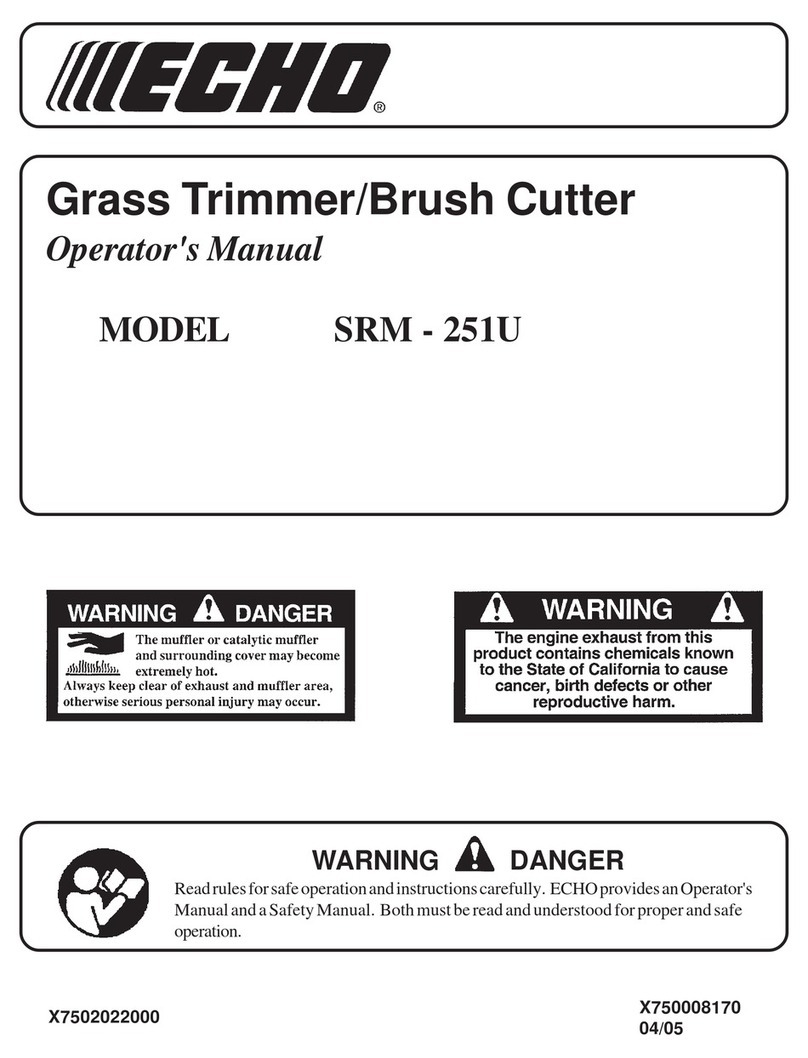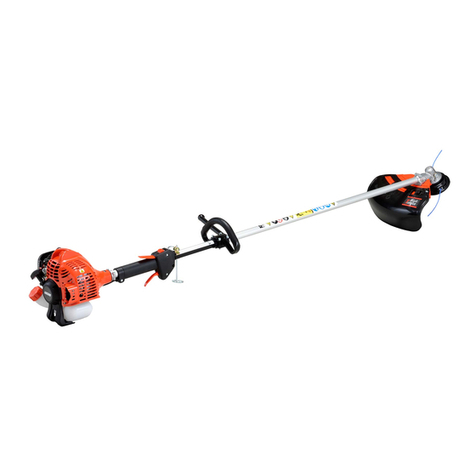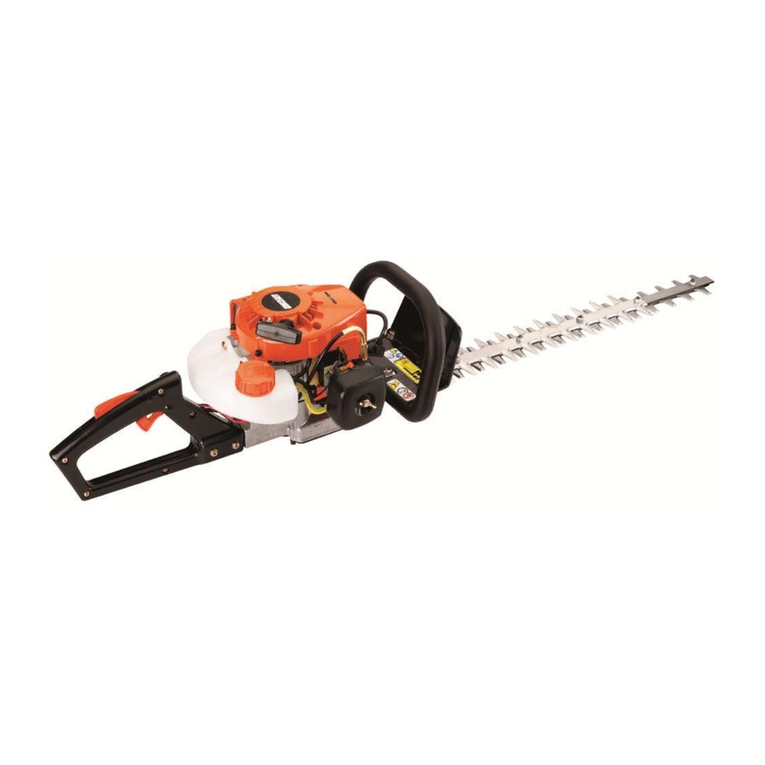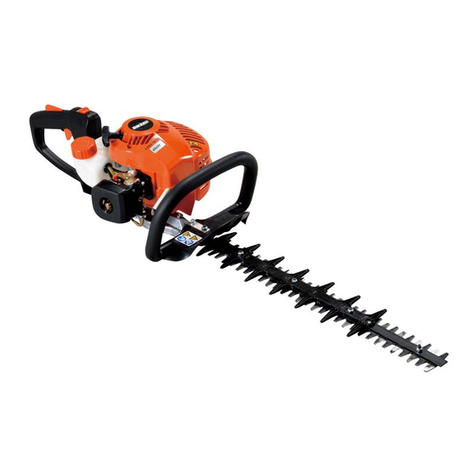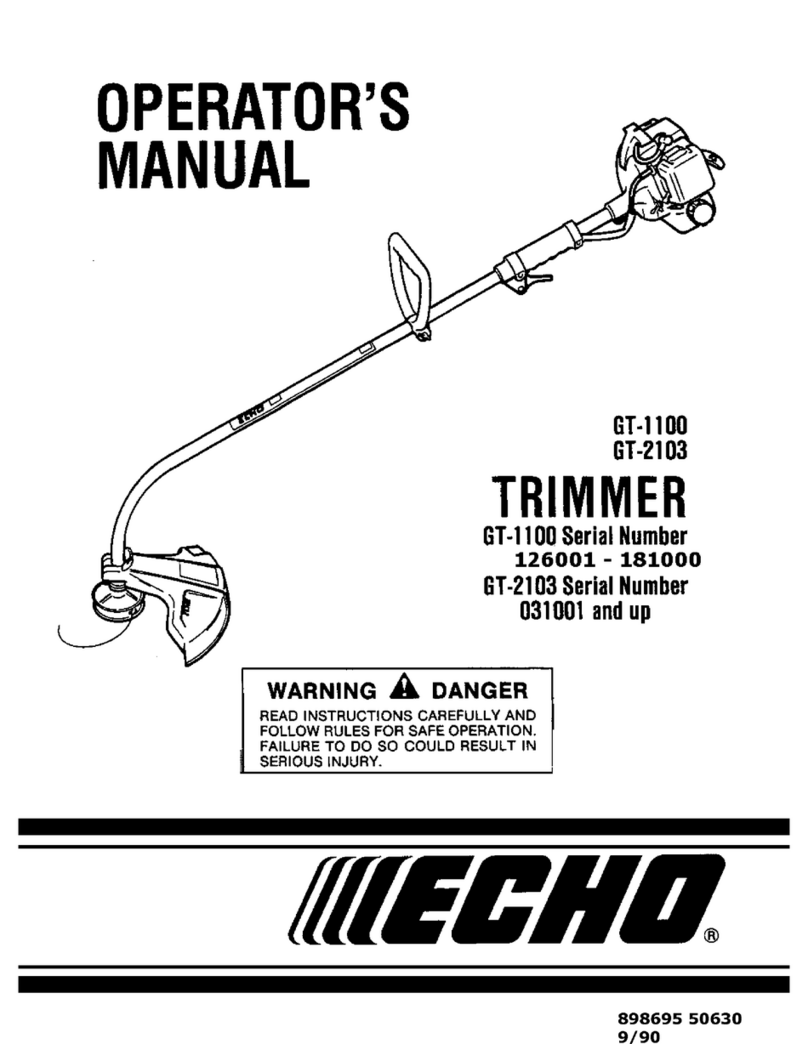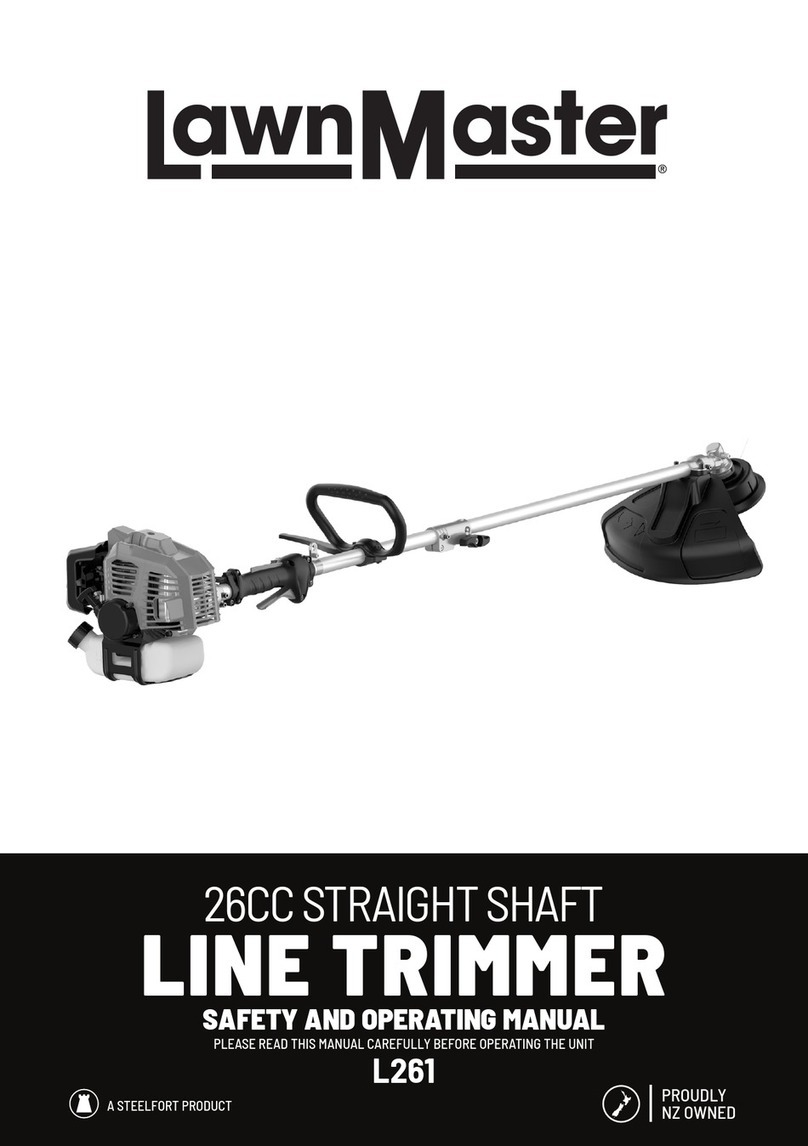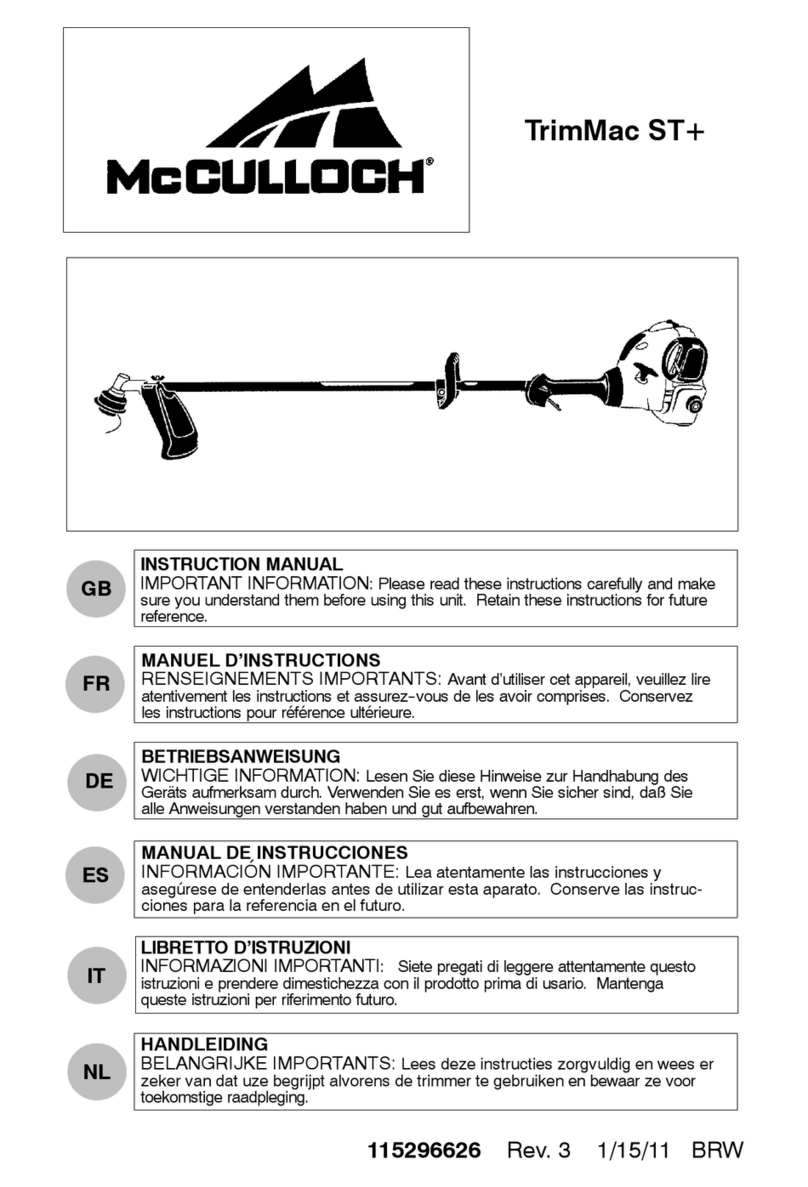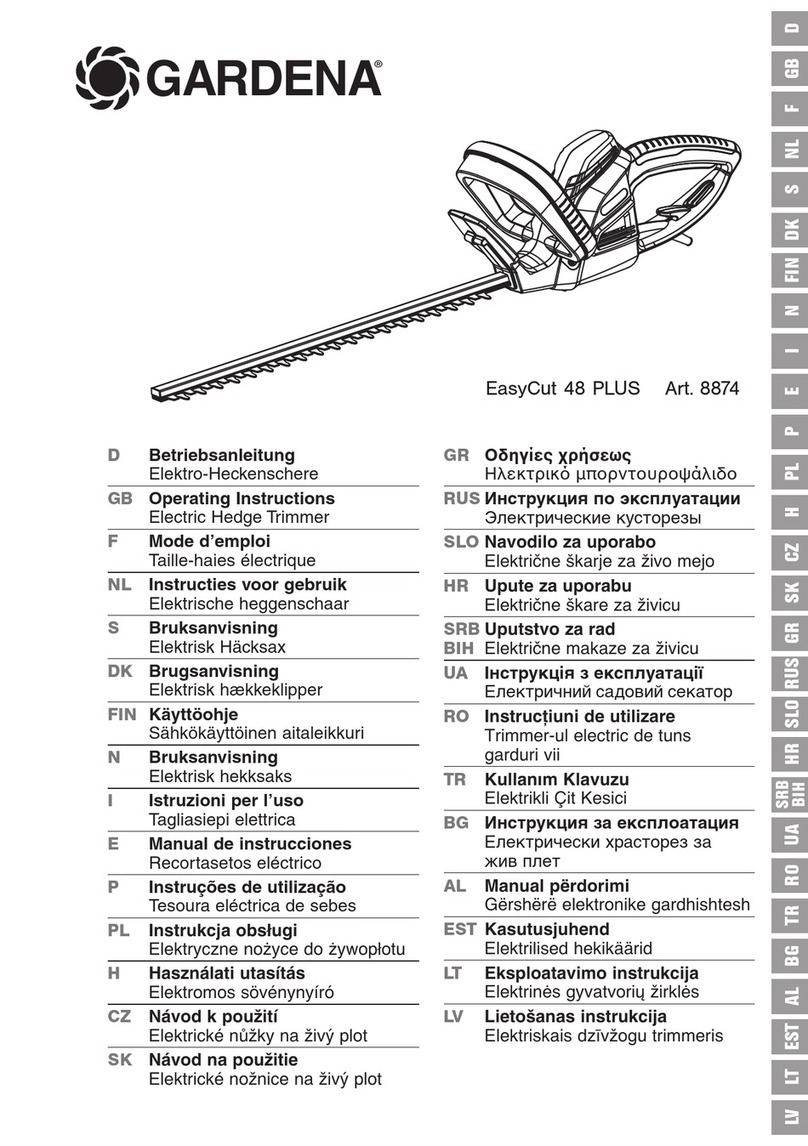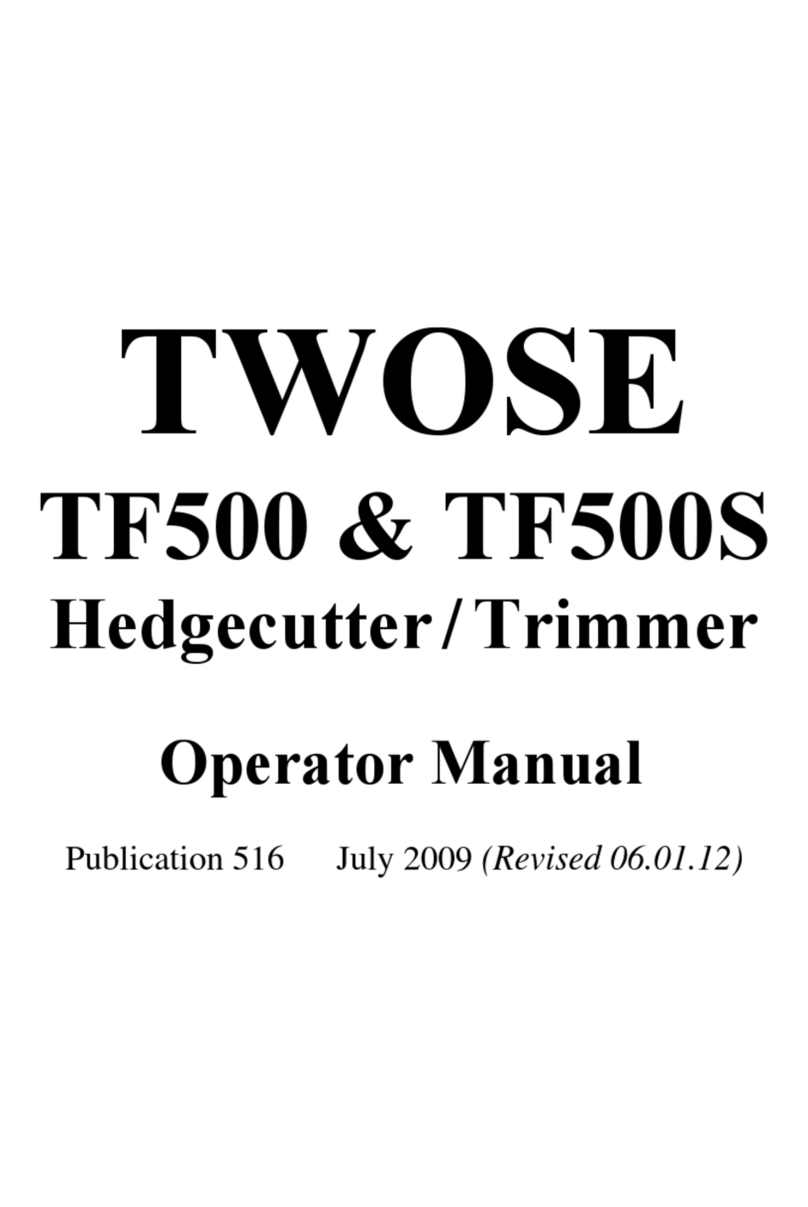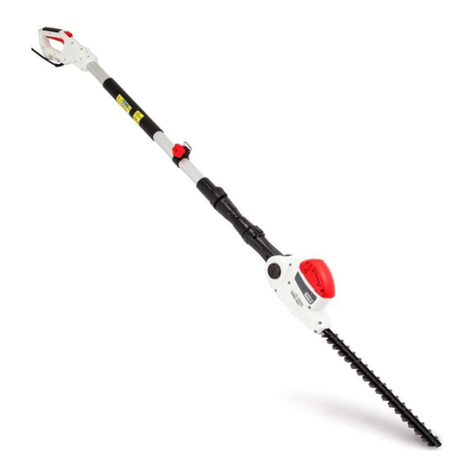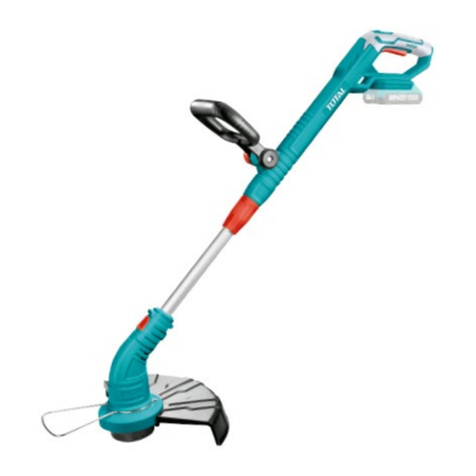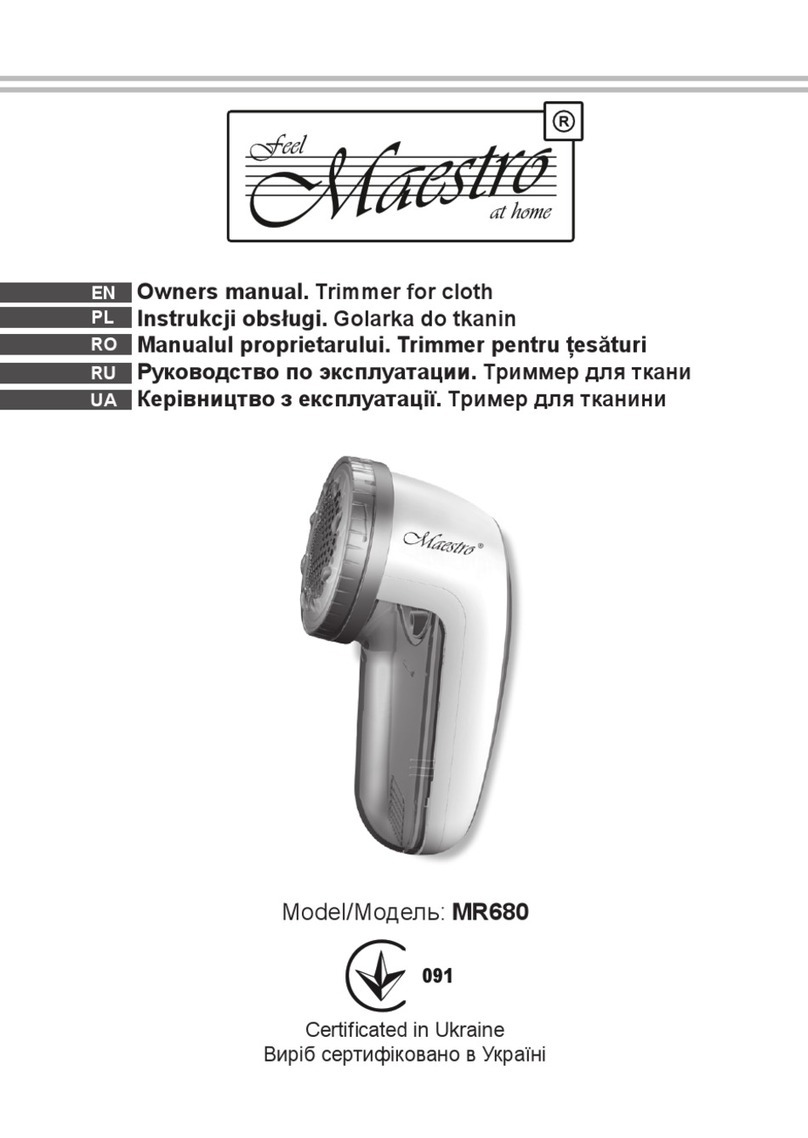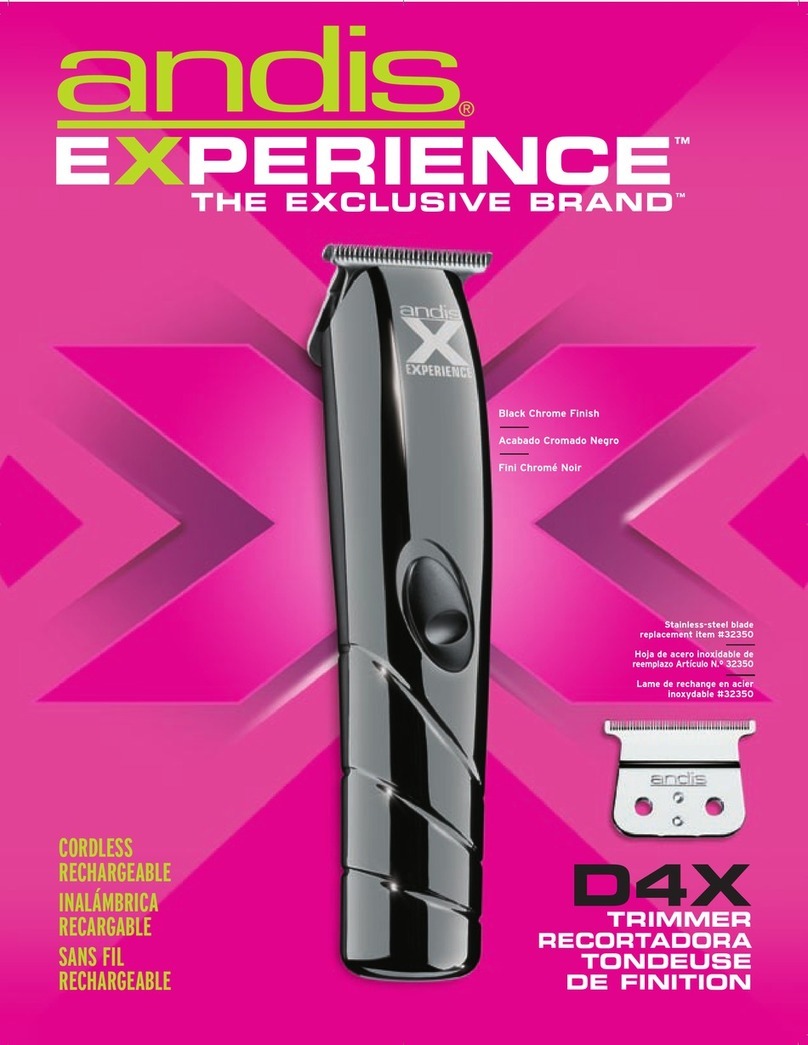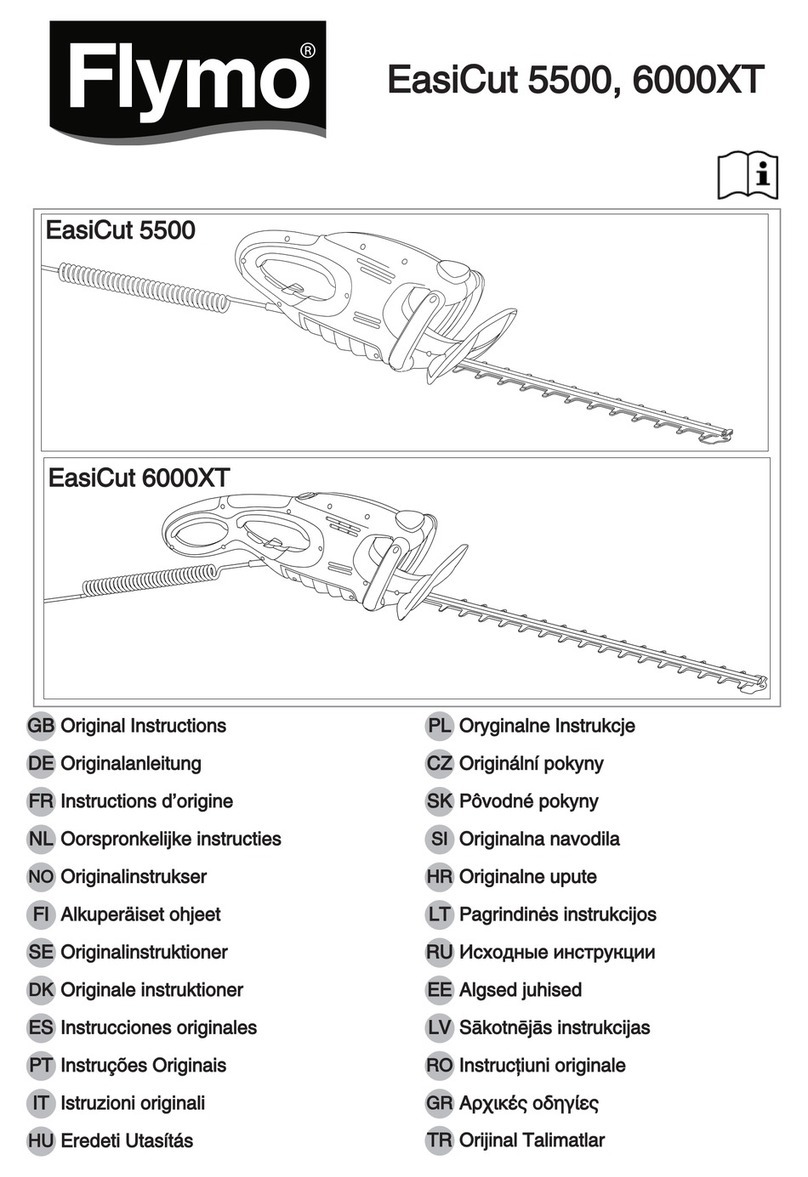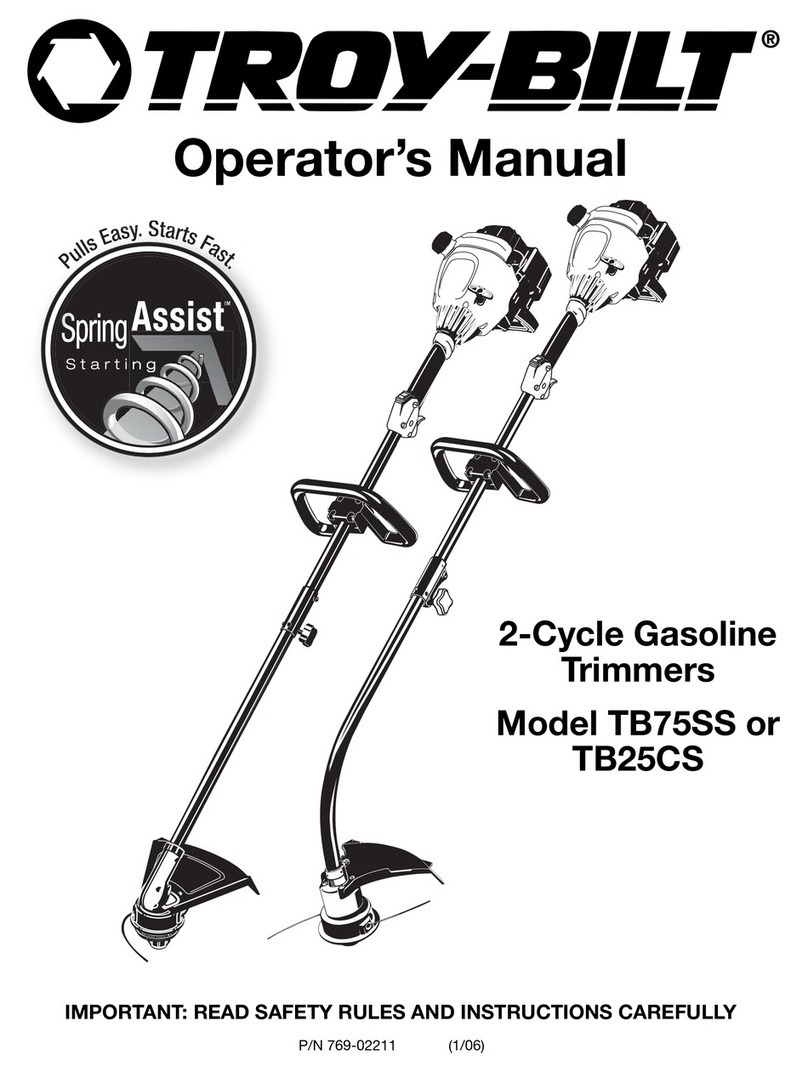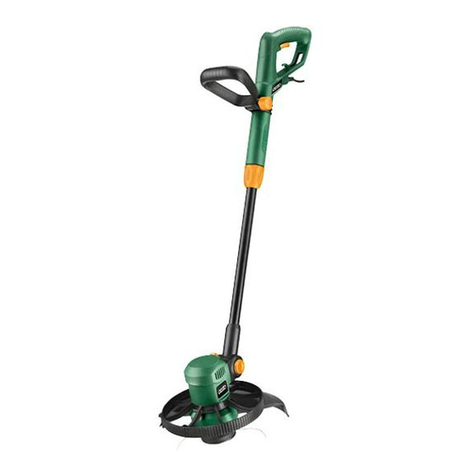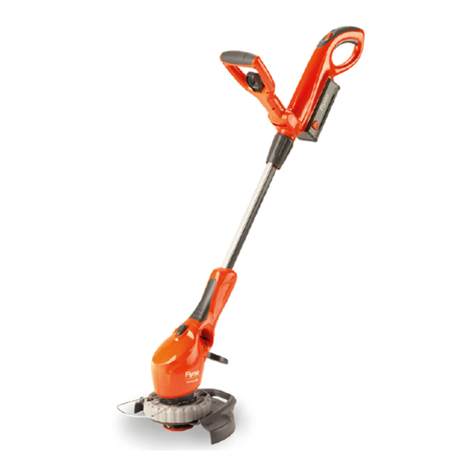2
Copyright© 2011 By Echo, Incorporated
All Rights Reserved.
IntroductIon
Welcome to the ECHO family. This ECHO product was designed and manufactured to provide long life and on-the-job-
dependability. Read and understand this manual as well as your attachment operator's manual and SAFETY MANUAL
before operation. You will nd these manuals easy to read and full of helpful operating tips and SAFETY messages.
the operator'smanual
Read and understand this manual before operation. Keep it in a safe
place for future reference. It contains specications and information
for operation, starting, stopping, maintenance, storage and assembly
specic to this product.
the attachment operator'smanual
Read and understand this manual before operation. Keep it in a safe
place for future reference. It contains specications and information for
operation and maintenance specic to the attachment.
the safety manual
Explains possible hazards and what measures you should take to ensure
safe operation.
table of contents
Introduction.................................................................... 2
- The Operator's Manual ........................................... 2
- The Attachment Operator's Manaul........................ 2
- The Safety Manual
Safety ............................................................................. 3
Manual Safety Symbols and Important Information ..... 3
- International Symbols............................................. 3
- Personal Condition and Safety Equipment ............. 3
- Equipment............................................................... 6
Emission Control ........................................................... 6
Description..................................................................... 7
Contents ......................................................................... 9
Assembly........................................................................ 9
- Attachment Shaft Assembly .................................. 9
- Front Handle Adjustment...................................... 10
Operation.......................................................................11
- Fuel ........................................................................11
- Starting Cold Engine............................................. 13
- Starting Warm Engine........................................... 14
- Stopping Engine.................................................... 14
Maintenance................................................................. 15
- Skill Levels ........................................................... 15
- Maintenance Intervals........................................... 15
- Air Filter ............................................................... 16
- Fuel Filter.............................................................. 16
- Spark Plug............................................................. 17
- Cooling System Cleaning ..................................... 17
- Exhaust System..................................................... 18
- Carburetor Adjustment ......................................... 20
- High Altitude Operation ..................................... 20
- Lubrication............................................................ 22
Troubleshooting ........................................................... 21
Storage ......................................................................... 23
Specications ............................................................... 24
- ECHO Approved Optional Attachments............... 25
- Recommended Optional Attachments .................. 25
Warranty Statements .................................................... 26
Servicing Information .................................................. 32
- Parts/Serial Number.............................................. 32
- Service .................................................................. 32
- ECHO Consumer Product Support....................... 32
- Warranty Card....................................................... 32
- Additional or Replacement Manuals .................... 32
Specications, descriptions and illustrative material in this
literature are as accurate as known at the time of publication,
but are subject to change without notice. Illustrations may
include optional equipment and accessories, and may not
include all standard equipment.
